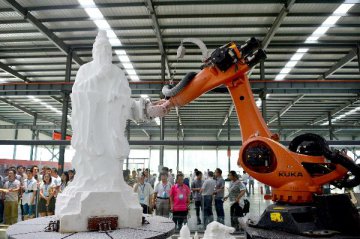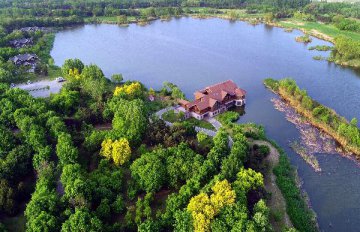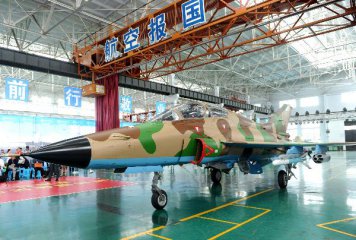Australia And New Zealand Banking Group Limited (ANZ):
Compiling a decade of poor conduct that fell short of community expectations for the royal commission was “confronting”, according to ANZ Banking Group chief executive Shayne Elliott, who apologised for the bank’s wrongdoing in a 2000- word memo to staff. He also said he hoped the royal commission would be a “watershed moment” in restoring the trust of customers and the community. “I’m committed to ANZ playing a significant role in repairing these relationships,” the ANZ boss said. Royal commissioner and former High Court judge Ken Hayne had asked Australia’s largest banks for confession statements of instances of bad behaviour that could run to a maximum of 50 pages, and to explain why the organisation think these failings happened and has been done to fix them.
Commonwealth Bank of Australia (CBA):
The Commonwealth Bank board has been wedged between a rock and a hard place ever since it kicked off the search for a new chief executive five months ago. The dilemma it immediately faced was that an internal successor ran the risk of perpetuating the hubris behind the bank’s governance failures, while a far-reaching cultural overhaul led by an external candidate could sap the business’s momentum. The market will make its own assessment of retail banking boss Matt Comyn, but even as CEO-in-waiting the 42-year-old faces a baptism of fire. This week, the independent panel appointed by APRA to probe CBA’s governance, culture and accountability frameworks is due to lodge its progress report. The deadline for the final report, which the prudential regulator will make public, is April 30 — three weeks after Comyn formally takes over from Ian Narev on April 9. CBA chairman Catherine Livingstone has repeatedly stressed the board imposed collective accountability on management for the Austrac debacle. All executive bonuses were slashed to zero.
Electro Optic Systems Holdings Limited (EOS):
ASX-listed defence tech outfit Electro Optic Systems (EOS) has won a $410 million contract that will see it supply remote weapon systems to an undisclosed overseas customer. The contract, which will brings sales of the R-400S-Mk2 system to $600m in its first 12 months of release, was announced this morning at a Canberra ceremony by the minister for defence Christopher Pyne, and follows the government’s announcement yesterday of a new $3.8bn defence fund. “This new weapon system was initiated in 2005 under a US Army contract to develop next-generation weapon systems,” EOS CEO Dr Ben Greene said at the ceremony.
Evolution Mining Limited (EVN):
Gold miner Evolution says it is on track to “comfortably” meet its full-year guidance, despite a fall in gold production in the December quarter after it sold a mine in Western Australia. Gold production for the three months to December 31 fell to 186,488 ounces from 220,971 ounces in the September quarter — which included production from WA’s Edna May mine. Australia’s second largest gold miner (EVN) expects production for the full year to be above the midpoint of between 750,000 and 805,000 ounces, while all-in-sustaining cost is forecast to be at or below the bottom end of between $820 and $870 per ounce.
Fatfish Internet Group Ltd (FFG):
Cryptocurrencies will ride out the current volatility to become part of the mainstream payment industry, and Asia is shaping up as the epicentre of the “crypto” revolution, according Kin-Wai Lau, the Singapore based CEO of ASX-listed Fatfish Internet Group. “This is the biggest technology disruption since the internet. Take the bitcoin price fluctuations out of the picture for a minute and look at the technology and the application and this is really big,” Mr Lau told The Australian. “It’s already disrupting how people conduct businesses online and how they will interact with each other in the future.” Fatfish listed on the ASX in 2014 as an early-stage technology incubator, largely focused on the consumer internet space, but has since diversified into other segments, including cryptocurrencies. This month, Fatfish became the first ASX-listed company to venture into the realm of “mining” cryptocurrencies, investing $US1 million ($1.2m) into Singapore-based start-up APAC Mining to set up a Malaysia data centre dedicated to crypto-mining.
Fortescue Metals Group Ltd (FMG):
Fortescue Metals Group said it shipped less iron ore last quarter, while output costs also edged to a new low. The world’s No 4 iron-ore exporter (FMG) said it shipped 40.5 million tonnes of the steelmaking commodity in the three months through December, down 8 per cent on-quarter and 4 per cent on-year. Still, that is in line with its goal to ship ore at an annual rate of 170 million tonnes, the company said. Cash production costs were down 1 per cent on-quarter, and 4 per cent on-year, to a new low of US$12.08 a wet metric ton, aided by productivity initiatives, it said. Fortescue reported net debt of $US3.3 billion and gross debt of $US4.2 billion, down from $US4.4 billion a quarter ago. The company borrowed heavily to build a network of mines, rail lines and port infrastructure in Australia’s remote Pilbara region in a decadelong quest to break the dominance of Australian rivals Rio Tinto and BHP Billiton and Brazil’s Vale SA. The company has pushed to repay debt since 2012, when a slide in iron-ore prices forced it into emergency talks with lenders.
Newcrest Mining Limited (NCM):
Newcrest Mining posted a 17.2 per cent increase in gold production in the December quarter, driven by increased production at four of its mines. Australia's biggest gold miner produced 612,695 ounces of gold in the three months to December 31, compared to 522,917 ounces in the September quarter. Copper output rose nearly 34 per cent from the preceding quarter to 22,321 tonnes. Newcrest managing director Sandeep Biswas said all but one of the company's operations improved on the previous quarter. "I am particularly pleased with Cadia's strong quarter-on-quarter production increase and record low quarterly AISC per ounce," Mr Biswas said.
Navitas Limited (NVT):
Australia's largest listed private education provider Navitas said that its half-year net profit dropped more than 50 per cent, hurt by college closures and lower demand for its English language programmes for migrants. The firm said net profit after tax for the six-months ended Dec. 31 was A$24.7 million, versus A$53.3 million a year ago, below a Deutsche Bank estimate for A$34.4 million. The company had previously said it expected to be affected by the loss of some government contracts for migrant language classes last year, and the closure of two colleges in Australia. It declared an interim dividend of 9.4 Australian cents per share, unchanged from a year ago.
(Source: AIMS)
Compiling a decade of poor conduct that fell short of community expectations for the royal commission was “confronting”, according to ANZ Banking Group chief executive Shayne Elliott, who apologised for the bank’s wrongdoing in a 2000- word memo to staff. He also said he hoped the royal commission would be a “watershed moment” in restoring the trust of customers and the community. “I’m committed to ANZ playing a significant role in repairing these relationships,” the ANZ boss said. Royal commissioner and former High Court judge Ken Hayne had asked Australia’s largest banks for confession statements of instances of bad behaviour that could run to a maximum of 50 pages, and to explain why the organisation think these failings happened and has been done to fix them.
Commonwealth Bank of Australia (CBA):
The Commonwealth Bank board has been wedged between a rock and a hard place ever since it kicked off the search for a new chief executive five months ago. The dilemma it immediately faced was that an internal successor ran the risk of perpetuating the hubris behind the bank’s governance failures, while a far-reaching cultural overhaul led by an external candidate could sap the business’s momentum. The market will make its own assessment of retail banking boss Matt Comyn, but even as CEO-in-waiting the 42-year-old faces a baptism of fire. This week, the independent panel appointed by APRA to probe CBA’s governance, culture and accountability frameworks is due to lodge its progress report. The deadline for the final report, which the prudential regulator will make public, is April 30 — three weeks after Comyn formally takes over from Ian Narev on April 9. CBA chairman Catherine Livingstone has repeatedly stressed the board imposed collective accountability on management for the Austrac debacle. All executive bonuses were slashed to zero.
Electro Optic Systems Holdings Limited (EOS):
ASX-listed defence tech outfit Electro Optic Systems (EOS) has won a $410 million contract that will see it supply remote weapon systems to an undisclosed overseas customer. The contract, which will brings sales of the R-400S-Mk2 system to $600m in its first 12 months of release, was announced this morning at a Canberra ceremony by the minister for defence Christopher Pyne, and follows the government’s announcement yesterday of a new $3.8bn defence fund. “This new weapon system was initiated in 2005 under a US Army contract to develop next-generation weapon systems,” EOS CEO Dr Ben Greene said at the ceremony.
Evolution Mining Limited (EVN):
Gold miner Evolution says it is on track to “comfortably” meet its full-year guidance, despite a fall in gold production in the December quarter after it sold a mine in Western Australia. Gold production for the three months to December 31 fell to 186,488 ounces from 220,971 ounces in the September quarter — which included production from WA’s Edna May mine. Australia’s second largest gold miner (EVN) expects production for the full year to be above the midpoint of between 750,000 and 805,000 ounces, while all-in-sustaining cost is forecast to be at or below the bottom end of between $820 and $870 per ounce.
Fatfish Internet Group Ltd (FFG):
Cryptocurrencies will ride out the current volatility to become part of the mainstream payment industry, and Asia is shaping up as the epicentre of the “crypto” revolution, according Kin-Wai Lau, the Singapore based CEO of ASX-listed Fatfish Internet Group. “This is the biggest technology disruption since the internet. Take the bitcoin price fluctuations out of the picture for a minute and look at the technology and the application and this is really big,” Mr Lau told The Australian. “It’s already disrupting how people conduct businesses online and how they will interact with each other in the future.” Fatfish listed on the ASX in 2014 as an early-stage technology incubator, largely focused on the consumer internet space, but has since diversified into other segments, including cryptocurrencies. This month, Fatfish became the first ASX-listed company to venture into the realm of “mining” cryptocurrencies, investing $US1 million ($1.2m) into Singapore-based start-up APAC Mining to set up a Malaysia data centre dedicated to crypto-mining.
Fortescue Metals Group Ltd (FMG):
Fortescue Metals Group said it shipped less iron ore last quarter, while output costs also edged to a new low. The world’s No 4 iron-ore exporter (FMG) said it shipped 40.5 million tonnes of the steelmaking commodity in the three months through December, down 8 per cent on-quarter and 4 per cent on-year. Still, that is in line with its goal to ship ore at an annual rate of 170 million tonnes, the company said. Cash production costs were down 1 per cent on-quarter, and 4 per cent on-year, to a new low of US$12.08 a wet metric ton, aided by productivity initiatives, it said. Fortescue reported net debt of $US3.3 billion and gross debt of $US4.2 billion, down from $US4.4 billion a quarter ago. The company borrowed heavily to build a network of mines, rail lines and port infrastructure in Australia’s remote Pilbara region in a decadelong quest to break the dominance of Australian rivals Rio Tinto and BHP Billiton and Brazil’s Vale SA. The company has pushed to repay debt since 2012, when a slide in iron-ore prices forced it into emergency talks with lenders.
Newcrest Mining Limited (NCM):
Newcrest Mining posted a 17.2 per cent increase in gold production in the December quarter, driven by increased production at four of its mines. Australia's biggest gold miner produced 612,695 ounces of gold in the three months to December 31, compared to 522,917 ounces in the September quarter. Copper output rose nearly 34 per cent from the preceding quarter to 22,321 tonnes. Newcrest managing director Sandeep Biswas said all but one of the company's operations improved on the previous quarter. "I am particularly pleased with Cadia's strong quarter-on-quarter production increase and record low quarterly AISC per ounce," Mr Biswas said.
Navitas Limited (NVT):
Australia's largest listed private education provider Navitas said that its half-year net profit dropped more than 50 per cent, hurt by college closures and lower demand for its English language programmes for migrants. The firm said net profit after tax for the six-months ended Dec. 31 was A$24.7 million, versus A$53.3 million a year ago, below a Deutsche Bank estimate for A$34.4 million. The company had previously said it expected to be affected by the loss of some government contracts for migrant language classes last year, and the closure of two colleges in Australia. It declared an interim dividend of 9.4 Australian cents per share, unchanged from a year ago.
(Source: AIMS)























Latest comments